Biographies: North Country Honor Flight #49 Veterans – September 2, 2023
North Country Honor Flight Operations Director Janet Duprey read these biographies at Saturday’s Send-Off Ceremony at the U.S. Oval.
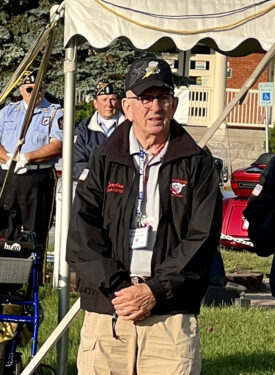 Gordon Compeau – U.S. Navy 1967-1970 Vietnam
Gordon Compeau – U.S. Navy 1967-1970 Vietnam
Already a heavy equipment operator, Gordon skipped basic training and took a leadership course. A Seabee, Gordon served two tours in Vietnam; first, Freedom Hill, Da Nang. Gordon had a unique skill in obtaining/trading supplies. Gordon traded a helicopter for concrete and installation of a baseball field. One late night, Gordon acquired a tracker trailer, a howitzer, and a load of ammo. The Provost Marshall couldn’t find the truck or its contents. On his second tour, Gordon became seriously ill, and returned stateside, with no help at VA, a civilian doctor diagnosed parasites requiring several surgeries. Gordon is proud to be healthier now than when he served.
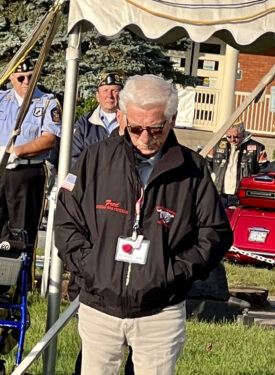 Frederick Decker – U.S. Army 1954-1957 Korean
Frederick Decker – U.S. Army 1954-1957 Korean
As the Korean War escalated, Fred’s father told Fred, a high school junior, to join the Army to help support their family of thirteen. Fred trained as an Ordnance Specialist and served as the Company Commander’s driver. Fred’s duties were ensuring the safety, security, and accountability of weapons, ammunition, and machinery. He also received, stored, transported, inspected, and disposed of weapons and ammunition. During a special ceremony, Frederick, with his younger brother Phillip, received their high school diplomas on June 16, 2023. Fred’s grandson Eli shared his high school graduation with his grandfather and great-uncle.
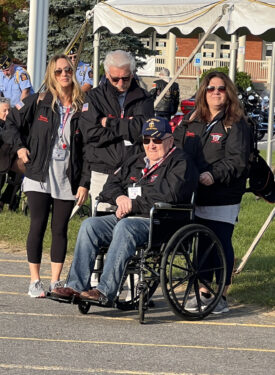 Phillip Decker – U.S. Navy 1959-1988 Vietnam
Phillip Decker – U.S. Navy 1959-1988 Vietnam
Phil, like Fred, enlisted at 17. Trained in Electronic Warfare, Phil served aboard key naval warships: supercarrier USS Forrestal CVA-59; USS Sellers DDG-11, a special destroyer modified for surface-to-air missiles; destroyer USS Mackenzie-DD-836. On the coastal water off Vietnam, Phil had an integral role in “Operation Sea Dragon,” impeding enemy ships from taking supplies to North Vietnam and destroying land targets with naval gunfire. Phil completed 29 years of service to our Country as an instructor at the U.S. Naval Academy. Phillip sure earned his high school diploma. Congratulations to Frederik and Phillip on their many achievements.
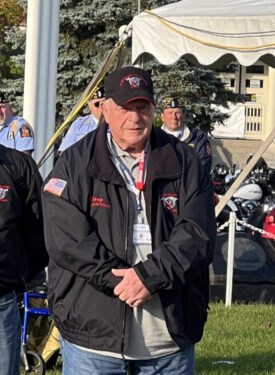 Gary Dragoon – U.S. Army 1967-1969 Vietnam
Gary Dragoon – U.S. Army 1967-1969 Vietnam
Gary was drafted. After basic training, Gary trained at Fort Sill as a Canon Fire Direction Specialist. Gary was sent to Pleiku, Vietnam. He loaded ground coordinates into a computer, determining the range, compass bearing, and angle to aim Howitzer guns so they could efficiently hit their enemy targets, avoiding endangering U.S. and friendly forces. Due to Gary’s accuracy, the Howitzers could fire a 200-pound round over 20 miles. Proud of his service, Gary was dismayed when told to change into civilian clothes to avoid harassment.
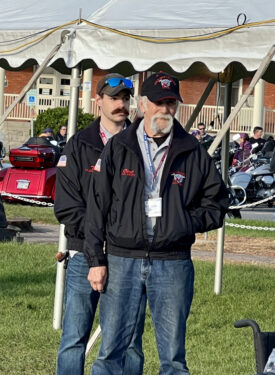 Carl Ketchum – U.S. Army 1967-1970 Vietnam
Carl Ketchum – U.S. Army 1967-1970 Vietnam
Carl enlisted. After basic training, Carl trained in vehicle fleets ranging from staff cars to 5-ton tracker trailers. Carl enjoyed driving a staff car for senior officers and high-ranking government employees. Carl drove from Fort Meade to the Pentagon, National Security Agency, FBI Headquarters, and classified sites in Baltimore. Transferred to Germany, Carl used his driving skills to deliver troops and military field equipment to joint force training areas and U.S. troops to German and Czechoslovakia border stations. On a trip, taking a break, Carl realized he was in a Neutral Zone way too close to the border and quickly exited.
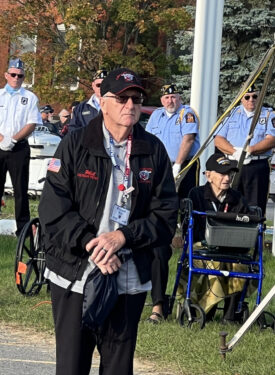 Phillip Kie – U.S. Air Force 1966-1970 Vietnam
Phillip Kie – U.S. Air Force 1966-1970 Vietnam
Phillip enlisted and trained as an Air Freight Specialist. Before deployment, Phil underwent leg surgery that required six months to recover. The Air Force stopped his pay; a congressman got Phil’s pay back. Phil’s time was limited; he reenlisted. Sent to Vietnam, Phil loaded and unloaded aircraft, including the caskets of U.S. soldiers and friendly forces. Not speaking the foreign families’ languages, Phil couldn’t communicate with them. While stationed at Glasgow Air Force Base, Montanna, Phil met his wife and they’re celebrating 56 years of marriage.
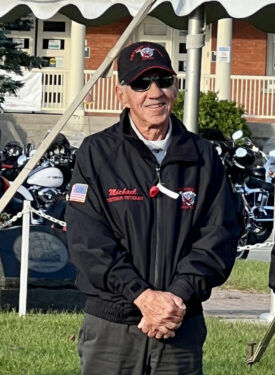 Michael O’Connell – U.S. Army 1969-1972 Vietnam
Michael O’Connell – U.S. Army 1969-1972 Vietnam
Michael had basic training at Fort Dix and advanced training as an Intelligence Analyst and Censor at the Army Intelligence Center, Maryland. Training in escape and evasion, Mike was locked in a foot locker, rolled down a hill and broke his ankle. Sent to Okinawa, Japan, Mike could live on or off base. The Monsoon rains kept him on base. Mike studied Indonesian, serving as an area specialist traveling to Taiwan. Mike learned the principle of saluting when he failed to salute a senior officer as he saluted a tree over and over.
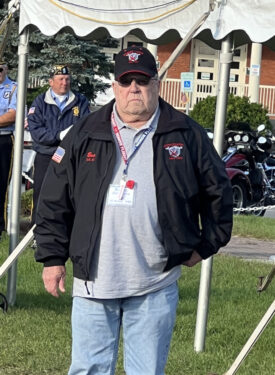 Ronnie Ouimette – U.S. Army 1958-1962 Vietnam, Army Reserves 1962-2001
Ronnie Ouimette – U.S. Army 1958-1962 Vietnam, Army Reserves 1962-2001
Ronnie enlisted at 17. After basic training, Bucky trained at Fort Devins as a Medical Specialist. He loved driving the Mobile Army Surgical Hospital (MASH) Ambulance. Sent to Germany, Bucky was assigned to the 8th Infantry Division, 8th Battalion, the largest ambulance company in Germany. Getting through the base gates, Bucky realized there were benefits to driving an ambulance as the MPs didn’t stop him from going off base to local bars. Bucky never got caught. Bucky served with the Army Reserves in Elizabethtown and Plattsburgh until 2001.
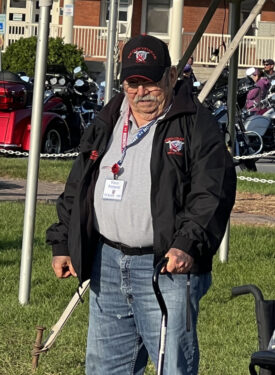 Vincent Patnode – U.S. Army 1971-1973 Vietnam
Vincent Patnode – U.S. Army 1971-1973 Vietnam
Drafted, Vincent was sent to Fort Sill, Oklahoma. Vince trained on the “Honest John Missile,” a truck-mounted weapons system, using an elevated rail launch platform that fired conventional missiles with high explosives. Assigned to South Korea, Vince met the U.S. Nuclear Support Team, who showed him how to carefully aim missiles at North Korea. In the field, tests were noisy as each missile broke the sound barrier twice immediately after launch. Vince fired missiles along the Demilitarized Zone (DMZ) close to the North Korean Mess Hall, blowing their windows out every time.
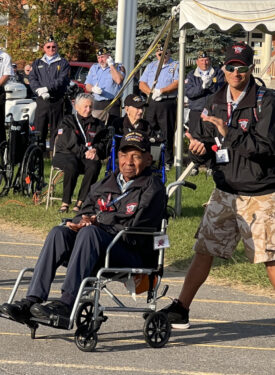 Norris Rhinehart – U.S. Army 1945-1946 World War II
Norris Rhinehart – U.S. Army 1945-1946 World War II
Norris wanted to enlist in the U.S. Navy to be aboard submarines. Segregation and discrimination denied Norris from the Navy, so he enlisted in the Army. Norris trained as a Culinary Specialist, referred to by fellow soldiers as Cook. During basic training preparing for deployment overseas, Norris received countless shots and medications for inoculations. Unfortunately, the inoculations wreaked havoc with him. Norris was hospitalized for six months, preventing his voluntary deployment overseas. Remaining state-side, Norris prepared meals for other soldiers disembarking for ships destined abroad and across the United States. Norris was subsequently discharged and returned home. Norris then entered the United States Postal Service and was assigned aboard trains as an armed currier. Let’s give a huge round of applause for 96-year-old World War II veteran Norris Rhinehart.
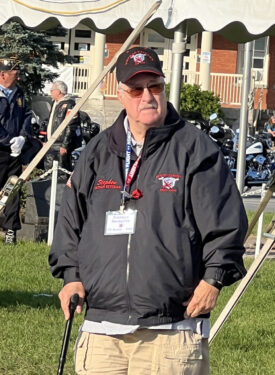 Stephen Shorette – U.S. Army 1966-1968 Vietnam
Stephen Shorette – U.S. Army 1966-1968 Vietnam
Drafted at 19, Stephen went to Fort Hood, Texas, for Combat Engineer training and was quickly shipped to Vietnam. Stephen’s duties included supporting infantry, building helicopter pads, roads, bridges and tunnels, and even removing mines. Recognizing helicopters were the backbone of the forces, the Combat Engineers knew clean, open landing zones were essential, especially when transporting wounded soldiers. Stephen helped clear the way throughout Vietnam. Stephen liked the Black Market when soldiers traded whisky for truck parts, beer, and steaks. Stephen said the worst beer is Ballantine.
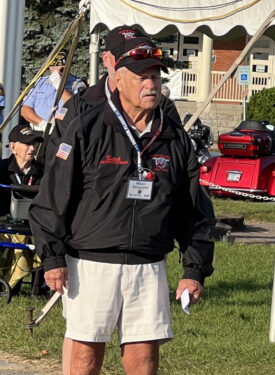 Ward Shorette – U.S. Army 1966-1968 Vietnam
Ward Shorette – U.S. Army 1966-1968 Vietnam
Drafted, Ward received training in ‘Light Artillery’. Deployed to Vietnam, Butch spent 23 days on a ship. Butch served thirteen months in the Mekong Delta, the largest enemy attack in the war. Light Artillery included the M-102 Howitzer, commonly towed behind trucks; in rough terrain or in urgent need of weapons on the front lines, helicopters dropped weapons by parachute. Butch was blinded by debris from a mortar attack, saying he didn’t hit the ground fast enough. Butch would like to forget the crowds booing in San Francisco as the soldier ended their tour. Some memories you never forget.
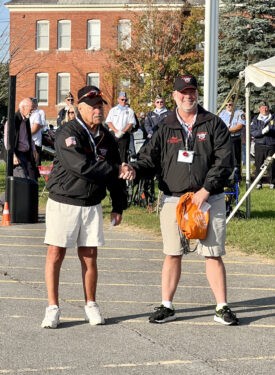 Robert Passon Veteran Guardian for Ward Shorette – U.S Coast Guard 1991-2018
Robert Passon Veteran Guardian for Ward Shorette – U.S Coast Guard 1991-2018
Robert enlisted, initially trained as a mechanic and was promoted to Marine Safety Specialist in Engineering. Rob was assigned to a remote site 150 miles north of Nome, Alaska, where they maintained a 1,350-foot tower, critical for long-range navigation for ships and aircraft, producing over 1 million megawatts of power. Rob sailed on cutters, tugs and ice breakers, serving 27 years of service to our Country.
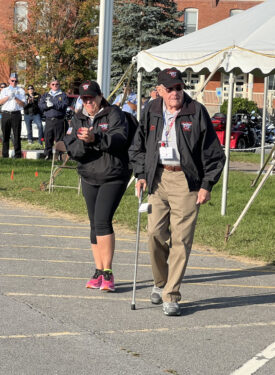 John Veno – U.S. Army 1958-1980 Vietnam Era
John Veno – U.S. Army 1958-1980 Vietnam Era
John trained at Fort Knox as a Tanker Army Crewman on the famous Patton First Generation Tank M48A5. Preparing for deployment with the National Guard or Active-Duty Army Unit, John was assigned to the 172nd Infantry Regiment, which specialized in mountainous and cold weather operations. John’s was the only conventional unit from the original 10th Mountain Division that fought during World War II. John was blown off a tank when a tank inadvertently fired too close to his position, causing a concussion. John is a dedicated Citizen Soldier, Vermont National Guard Vermont Strong. He had twenty years of service to our Country.
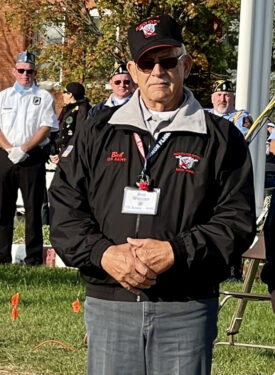 Robert Wright – U.S. Army 1963-1965 Vietnam
Robert Wright – U.S. Army 1963-1965 Vietnam
Drafted, Robert trained as a Heavy Vehicle Driver. Bob was sent to an Army Outpost on an ice cap in Greenland, the military’s most unusual base. Bob supported a 330-ton Nuclear Power Reactor, staying long enough to take it out. Bob traveled on a “Command Train” of bull-dozers and ice cats over frozen terrain; trailers contained repair shops, bunk houses and drums of fuel. Supply stops each half mile had blankets and C-rations. Men said, ‘a woman behind every tree’; there were no trees. One USO show may have had a woman or two. Bob recalls snowstorms going sideways, ropes tied between buildings for safety, and buildings buried under snow.
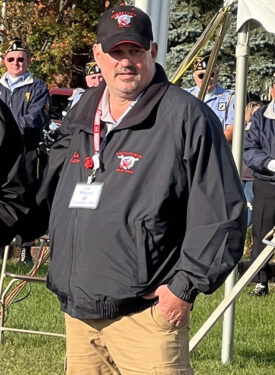 James Wright Veteran Guardian for his brother – U.S. Army 1984-1990 Cold War
James Wright Veteran Guardian for his brother – U.S. Army 1984-1990 Cold War
James enlisted and trained in Tactical Transport Helicopter Repair. Jim was assigned to the 101st Airborne as a Black Hawk Crew Chief near Seoul, South Korea. Jim flew with the 377th Medevac Unit, formerly the 4477th MASH. Jim’s Unit provided medical evacuation support to ground forces, transported wounded soldiers to medical centers, and gave timely, efficient medical care to injured soldiers. He flew with the U.S. Surgeon General, who wrote a letter recommending Jim for flight school.
Posted: September 4th, 2023 under Community Events, General News, National News, Northern NY News, Peru/Regional History, Veterans' News.
